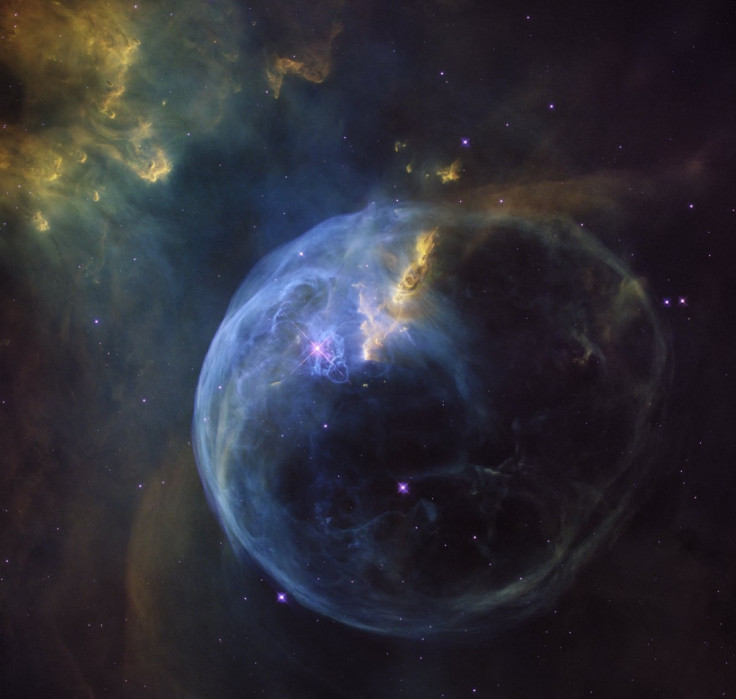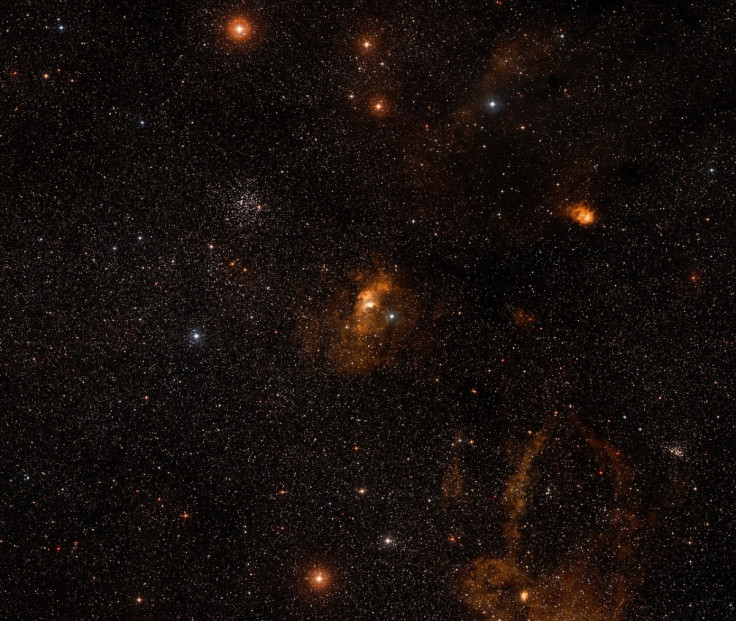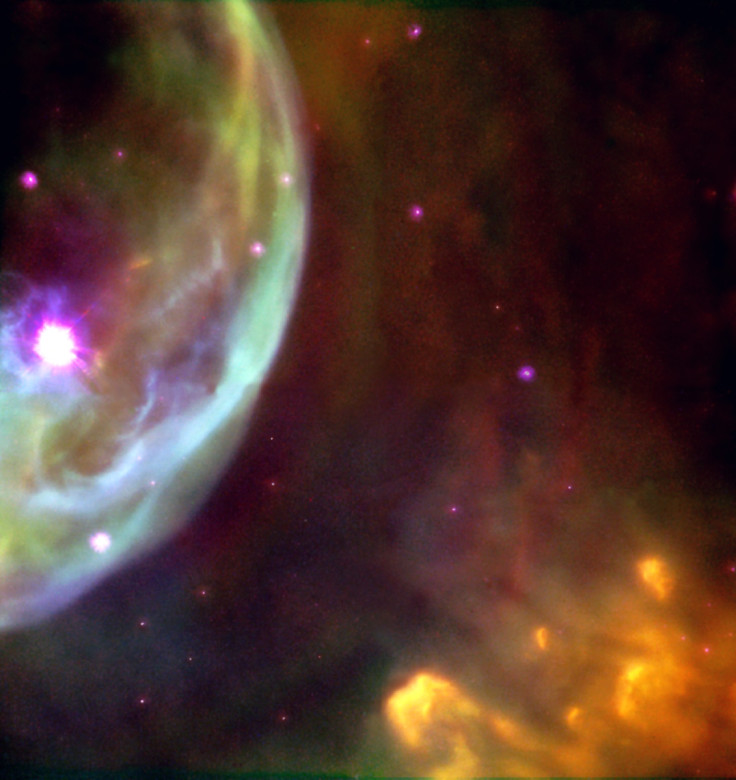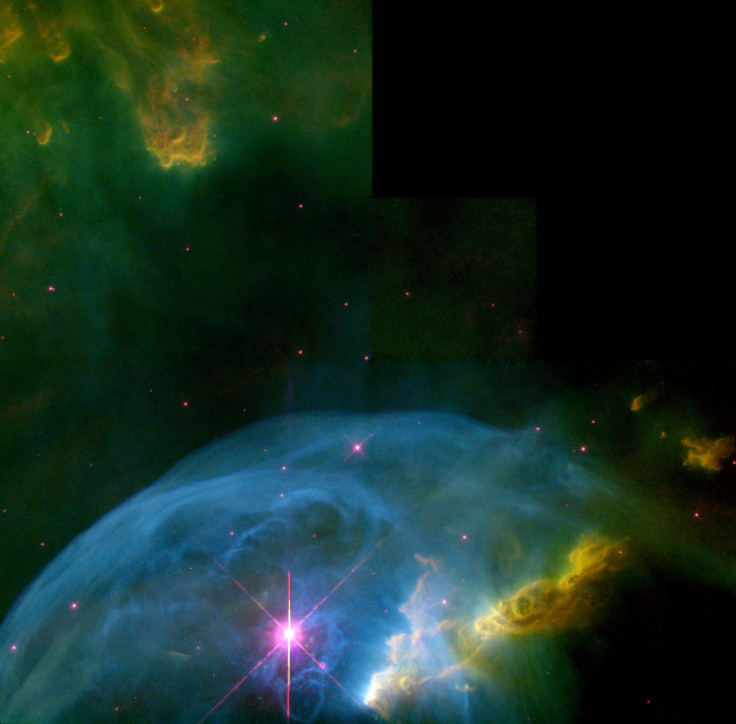Hubble Bubble: Nasa releases stunning image of Bubble Nebula to mark 26th anniversary of Hubble
Nasa and the European Space Agency have marked the Hubble Space Telescope's 26<sup>th year in orbit by releasing a new image of the Bubble Nebula. The image shows the entire nebula, with its spherical cloud of gas and dust illuminated by a bright star.
The Bubble Nebula, also known as NGC 7635, was discovered in 1787 by William Herschel, and it has been photographed by Hubble since 1998. However, previous images have only shown small sections of it, due to its very large size (ten-light years in diameter).
Scientists have now created a whole picture of the nebula by using a mosaic of four separate images, using Hubble's Wide Field Camera 3. Every year Nasa and the ESA release a distinctive image to celebrate Hubble's anniversary. In 2015, Hubble captured a cluster of 3,000 stars, known as Westerlund 2. The previous year, the image came from part of the Monkey Head Nebula.
This year's image shows the Bubble Nebula in stunning detail, presenting the almost perfectly symmetrical cloud of gas and dust and the star that illuminates it.

Lying 8,000 light years from Earth, the Bubble Nebula gets its name from its giant molecular cloud, seen in the image as a blue/purple colour. It appears illuminated due to the bright star, SAO 20575, seen just to the left of centre in the cloud. This star is between ten and twenty times the mass of the Sun, and the pressure created by it's stellar wind pushes all of the surrounding material outwards – forming the bubble shape.
The star is surrounded by the glowing molecular cloud, which tries to stop the bubble expanding. However, the pressure continues to increase and subsequently forces the bubble to grow – currently at more than 100,000 kilometres per hour. The star also illuminates the complex system of cometary knots – crescent-shaped blobs of dust – seen just to the right of the star in the image.

Hubble was launched into orbit on-board the Discovery space shuttle twenty six years ago, on April 24 1990. It orbits at around 600km above Earth, and uses ultraviolet light to observe distant celestial objects.
It is the only telescope designed to be repaired in space by astronauts. Following its launch, it has been upgraded and repaired five times – the most recent in 2009. Scientists believe the telescope can remain operational for at least another four years, and could even keep working until 2030. This should overlap with its successor, the James Webb Space Telescope, due for launch in October 2018.


© Copyright IBTimes 2024. All rights reserved.







